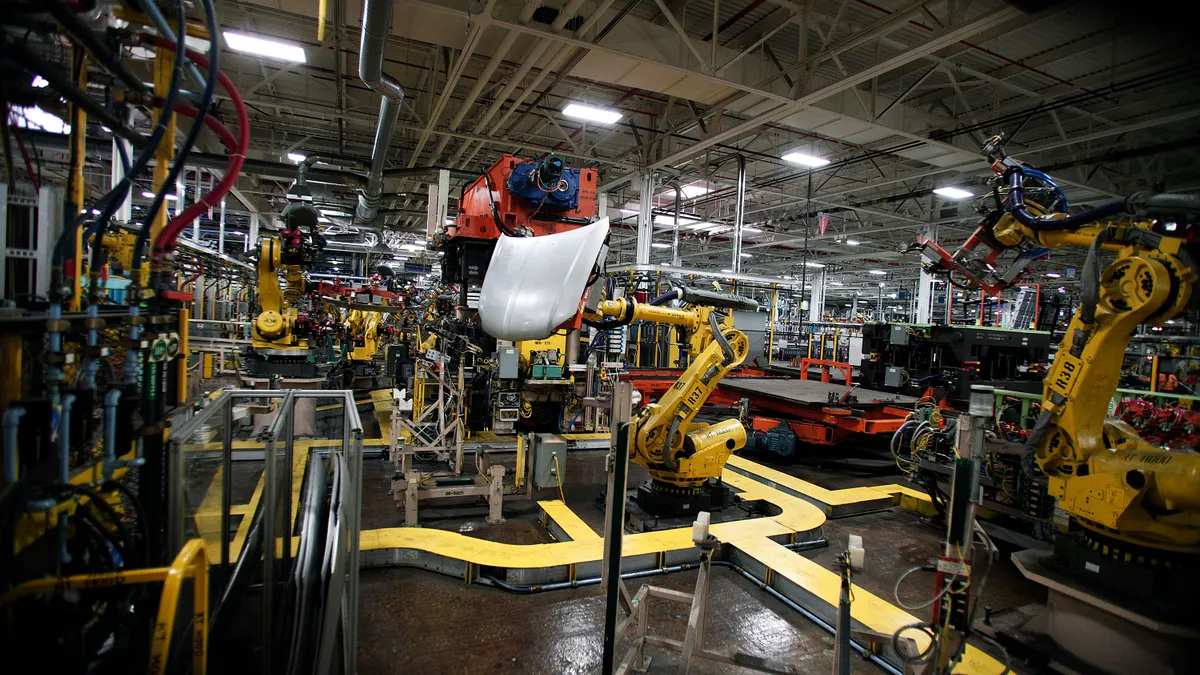Dive Brief:
- Lead times are at record highs and "still accelerating," Timothy R. Fiore, chair of the Institute for Supply Management's Manufacturing Business Survey Committee, said on a Thursday press call.
- The lead time for production materials rose from 85 days in May to 88 days in June, which is the highest figure since ISM began collecting data in 1987. Lead time for maintenance, repair and operating supplies increased from 42 to 45 days, while lead time for CapEx decreased from 148 days to 144 days.
- Extended lead times are particularly affecting electronic supplies, which includes semiconductors. One respondent to ISM's June 2021 Manufacturing Report on Business said lead times for electronic components went from 16 weeks to more than 52 weeks.
Dive Insight:
Businesses and their suppliers have faced months of challenges leading to extended order-to-delivery timelines — from port congestion and transportation bottlenecks, to raw material shortages, to labor constraints at the vendor or manufacturer.
ISM's latest report notes a decline in the Supplier Deliveries Index. Any reading above 50% indicates slower deliveries; the index clocked in at 75.1% for June.
Lengthened lead times and slowed supplier deliveries are not unique to any one industry. ISM's report assesses 18 industries, and 17 reported slower supplier deliveries in June.
Packaging manufacturers encountered longer lead times for materials when a Texas storm shuttered production at refineries and petrochemical plants. The freight bottlenecks that resulted from the storm only made matters worse. La-Z-Boy reported lead times ranging from four to nine months, compared to the typical four to six weeks.
Because the factors contributing to longer lead times are multi-faceted, so are the solutions.
Brands have tackled port congestion challenges by seeking alternative seaports for import or export, or by diverting some shipments to airfreight. Big-box retailers including Walmart are navigating around longer lead times by accounting for the longer timeline in their supply chain planning.
For automotive and electronics supply chains, the availability of supply to meet elevated demand is a concern. Experts predict it could be 2022 before semiconductor suppliers are able to start whittling away at their backlogs. And even when supply is attainable, lead times for electronic components are three times longer than normal, according to one respondent in ISM's survey. The supply chain challenges led Ford to limit or halt production at several manufacturing plants this month.
Fiore emphasized the biggest challenge continues to be recruitment and retention of labor, at manufacturers and their suppliers.
"It's impossible to increase capacity if you don't have the labor," Fiore said. But he added that many manufacturers are reluctant to raise wages in case demand subsides in the future. Seasonally adjusted employment in the manufacturing sector is about 400,000 short of pre-pandemic levels.
The combination of labor issues, supply shortages, increased demand and transportation costs have led many suppliers to raise prices. It's a convergence of challenges that means supply chain managers face not only longer lead times and potentially higher inventory carrying costs, but also higher materials prices.
"The price levels that we're at are unsustainable," Fiore said. The Prices Index in June was 92.1%, the highest level since July 1979.
"Pricing power continues to be seller advantage, meaning that the supply manager will pay the price to acquire materials, price being secondary," Fiore said. "It's definitely a seller's market."














